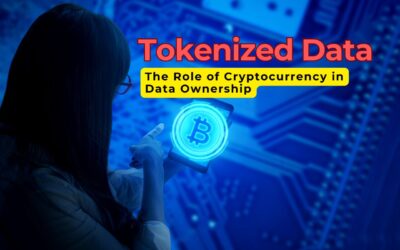In the rapidly evolving landscape of digital marketing, AI-generated influencers have emerged as a fascinating and controversial phenomenon. These virtual characters, created entirely through artificial intelligence, are making waves in the influencer marketing industry. But the big question remains: Are AI-generated influencers the future of digital influencing, or are they merely a passing trend?
What Are AI-Generated Influencers?
AI-generated influencers, also known as virtual influencers, are computer-generated characters designed to interact with audiences on social media platforms. Unlike human influencers, these digital personas do not have real-life counterparts. Instead, they are meticulously crafted by teams of designers, animators, and AI specialists, who control every aspect of their appearance, personality, and content.
Some of the most popular AI influencers include Lil Miquela, a virtual model with millions of Instagram followers, and Shudu, the world’s first digital supermodel. These virtual influencers often appear just as real as their human counterparts, with lifelike features, emotions, and even backstories that engage audiences.
The Appeal of AI-Generated Influencers
- Control and Consistency: Brands can have complete control over AI influencers, from their looks to their behavior and messaging. This level of control ensures consistency in branding and eliminates the risk of scandals or unpredictable behavior that can sometimes accompany human influencers.
- Scalability: AI-generated influencers can be replicated and adapted to different markets, languages, and cultures with relative ease. This scalability makes them an attractive option for global brands looking to reach diverse audiences.
- Cost-Effectiveness: While creating an AI influencer can be expensive initially, the long-term costs can be lower than those associated with human influencers. AI influencers don’t demand fees, can work around the clock, and don’t need breaks, making them a potentially cost-effective marketing tool.
- Innovation and Novelty: The novelty of AI influencers can generate buzz and attract attention. Early adopters of this technology can position themselves as innovative and forward-thinking, appealing to tech-savvy and curious audiences.
The Challenges and Criticisms
- Authenticity Concerns: One of the main criticisms of AI-generated influencers is their lack of authenticity. In an era where consumers value transparency and genuine connections, the idea of following and engaging with a computer-generated character can feel inauthentic.
- Ethical Considerations: The rise of AI influencers raises ethical questions about transparency, manipulation, and the potential for deception. If audiences are unaware that they are interacting with an AI, it could lead to a breakdown in trust.
- Emotional Connection: Human influencers thrive on their ability to connect with audiences on a personal level, sharing real-life experiences, emotions, and vulnerabilities. AI influencers, despite their sophistication, may struggle to replicate this emotional connection.
- Market Saturation: As more brands and creators enter the AI influencer space, the novelty could wear off, leading to market saturation. Consumers may eventually become desensitized to virtual influencers, reducing their impact.
The Future of AI-Generated Influencers
The future of AI-generated influencers is uncertain, but their potential impact on digital marketing cannot be ignored. As AI technology continues to advance, we can expect these virtual characters to become even more sophisticated, blurring the lines between reality and fiction. Here are some possible scenarios for the future:
- Integration with Human Influencers: Rather than replacing human influencers, AI-generated influencers may work alongside them. We could see collaborations where AI and human influencers co-create content, offering a blend of authenticity and innovation.
- Niche Market Dominance: AI influencers may find their place in niche markets where their unique qualities—such as consistency, scalability, and the ability to adapt to specific brand needs—are particularly valuable.
- Augmented Reality Experiences: As augmented reality (AR) technology evolves, AI influencers could become central to immersive marketing experiences, interacting with consumers in virtual spaces and providing personalized brand interactions.
- Evolving Consumer Acceptance: Over time, consumer perceptions may shift, leading to greater acceptance of AI influencers. As virtual characters become more relatable and lifelike, they could carve out a permanent space in the influencer marketing ecosystem.
How AI-Generated Influencers Can Drive Business Success
The integration of AI-generated influencers into marketing strategies holds significant potential for business success. Here’s how:
- Enhanced Brand Control and Alignment: Businesses can ensure that AI-generated influencers align perfectly with their brand values, messaging, and image. This level of control allows for the creation of highly curated and consistent marketing campaigns, reducing the risk of misalignment that can occur with human influencers.
- Precision Targeting and Personalization: AI influencers can be tailored to resonate with specific target audiences, enabling businesses to engage with consumers on a more personalized level. This precision targeting can lead to higher engagement rates and more effective marketing outcomes.
- Cost-Effective Marketing Solutions: For businesses operating on tight budgets, AI-generated influencers offer a cost-effective alternative to traditional influencer partnerships. The absence of ongoing fees, the ability to work continuously, and the potential to reach global audiences without additional costs make AI influencers an attractive option for maximizing marketing budgets.
- Scalability Across Markets: As businesses expand globally, the ability to adapt AI influencers to different cultural contexts and languages without significant additional investment provides a scalable solution for international marketing efforts. This adaptability can help brands maintain a consistent presence across diverse markets.
- Innovative Brand Image: By adopting AI-generated influencers, businesses can position themselves as innovators and early adopters of cutting-edge technology. This forward-thinking image can attract tech-savvy consumers, enhance brand reputation, and differentiate businesses from competitors.
- Data-Driven Insights and Optimization: AI-generated influencers are not only marketing tools but also sources of valuable data. Businesses can leverage AI to analyze engagement metrics, consumer behavior, and campaign performance in real-time. These data-driven insights can inform future marketing strategies, enabling continuous optimization and improved ROI.
Conclusion: Trend or Transformation?
AI-generated influencers are more than just a passing trend; they represent a significant shift in the way brands and consumers interact. While they may not replace human influencers entirely, their presence in the digital marketing landscape is likely to grow. Brands that embrace this technology early on could gain a competitive edge, while those who approach with caution can still benefit from observing how AI influencers evolve.
In the end, the success of AI-generated influencers will depend on their ability to connect with audiences in meaningful ways. Whether through innovative collaborations with human influencers or by creating new forms of digital engagement, AI influencers are set to play a pivotal role in the future of digital marketing—and, consequently, in driving business success












